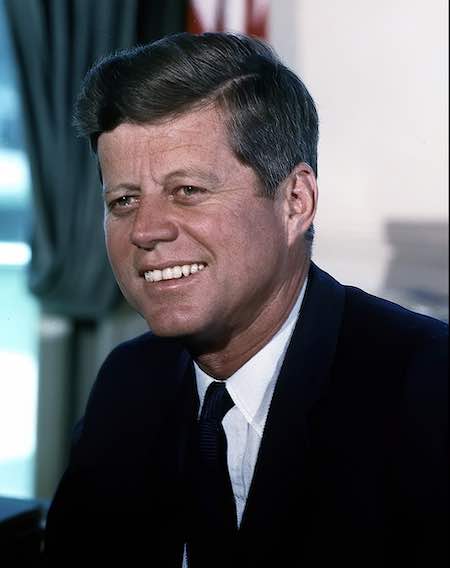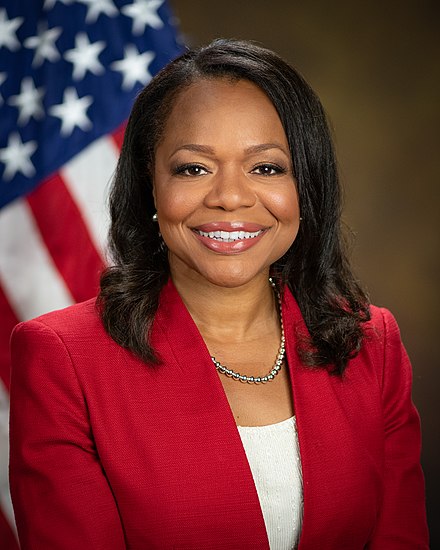In the short days since she became the presumptive Democratic nominee, there has been a concerted effort to portray Vice President Kamala Harris as the Voice of Generation Z.
It begins—where else?—on TikTok. TikTok is now overflowing with “Kamala is BRAT” memes, in which video clips of the dancing vice president are juxtaposed with rap music and various urban settings.
Meanwhile, the DNC has enlisted a handful of Gen Z music celebrities—all of whom have a long track record of being left-of-center anyway—as Harris shills.
One of these, Olivia Rodrigo, is a constant source of boilerplate, knee-jerk leftism. When I read that Rodrigo had jumped on the Harris bandwagon, I was like: “Well, of course.” Did anyone really believe that Rodrigo and her camp followers were poised to vote for Trump, until the Democratic Party swapped the 81-year-old Biden for the (ahem!) 59-year-old Harris?
Nevertheless, we may concede a point here. The 59-year-old Harris is 22 years younger than President Biden, and 18 years younger than former President Trump. The Democratic Party ticket is now headed by someone the age of the typical grandparent, versus the typical great-grandparent.
A personal aside: I was already in junior high when my maternal grandparents were 59 years old. They were in their early 60s when I was in high school.
Their sixties. VP Harris is soon to enter that senior citizen territory herself. The vice president was born on October 23, 1964. So she’ll be 60 years old on Election Day.
Generationally speaking, Harris has a lot more in common with Trump than she does with Gen Z voters. Trump and Harris are both—wait for it!—members of that much-maligned Baby Boomer generation, which was born between 1946 and 1964. Trump was among the cohort of the earliest Boomers, and Harris was among the latest.
But a Boomer is a Boomer. You can say, “Okay, Boomer,” to either Harris or Trump, and still be technically correct.
Another personal aside: I’m 4 years younger than Vice President Harris, born in 1968. At 56, I would never claim to be fully relatable to one of 2024’s 18-year-olds, who were born in 2006.
Too much time has passed. I was 18 in 1986, when Ronald Reagan was in the White House, the Internet was unheard of, and America was a fundamentally sane place.
There is only one candidate in the race so far who can even marginally claim the mantle of youth candidate: Trump’s running mate, J.D. Vance. Born in 1984, J.D. Vance will enter his 40s next month. Vance is not a Boomer, nor even a Gen Xer, but a Millennial.
Vance is 20 years younger than Harris. He came of age with the Internet. His formative experiences are not exactly those of Gen Z, but he’s the closest thing to a Zoomer that the race currently has.
The media, though, has ignored J.D. Vance’s youthful status. Vance doesn’t fit the mainstream media narrative. “Youth” must belong to the Democrats. I suspect that the media also resists the notion that a “youth” candidate could be anything but a woman from a diverse ethnic/racial background. J.D. Vance is white, male, heterosexual, Appalachian…and young. That’s a combination that the mind of the typical mainstream media journalist simply cannot process.
But maybe the emphasis on superficial youth is misguided, anyway. If youth were the priority in a leader, both parties would run nothing but 35-year-olds (35 being the minimum legal age for POTUS).
Ronald Reagan, moreover, did very well with young voters in 1980. Reagan was 69, and our oldest presidential contender at that time.
It might be better to ask: what are the priorities of Generation Z? Having a hip, youthful leader who will dance in the Oval Office?
I would wager that the average young voter accepts and expects that the next POTUS will be significantly older than them, both chronologically and temperamentally.
Savvy young people also grasp when older people are pandering to them. And they can guess at ulterior motives. Anyone with a teenage son or daughter will agree.
The mainstream media tells us that Gen Z voters mainly want a.) an abortion clinic on every corner and b.) a relentless societal focus on LGBTQ issues. We are also told that every young person is obsessed over the situation in Palestine.
I wouldn’t deny that there are some young people with that combination of priorities, but such a perception skews disproportionately toward college students, who are disproportionately left-leaning.
But haven’t you heard? Fewer young people are college students than has been the case in decades, and young male college enrollment is way down. The student protestors on CNN are not necessarily the voices of their generation.
I wouldn’t bill myself as the voice of Gen Z. (Like I said, I’m 56.) But I do have opportunities to talk to many of them in my social circle here in Ohio.
Yesterday I spoke to a 26-year-old restaurant worker who is also the mother of a six-year-old. She is not married, but she is in a long-term, monogamous heterosexual relationship with the father of her child. She and her partner are focused on buying a house.
Is she also focused on Pride celebrations, abortion, and Palestine? Perhaps, but I’m skeptical. I’ve spoken to this young woman many times. Like most young parents since time immemorial, her focus is on kitchen-table issues.
I’m not implying that all members of Gen Z hold conservative views. The polling shows otherwise. And even if the polling is skewed toward the views of left-of-center university students, it can’t be ignored completely.
What all young voters want, however (even if they won’t admit it), is a POTUS who unabashedly acts like a full-fledged adult. From a young person’s perspective, the POTUS is not a weekend buddy, nor even a parent or a professor. The POTUS is a distant figure who (hopefully) provides a secure, prosperous environment in which the young can thrive.
Nor am I pointing my finger only at Vice President Harris. During the last presidential debate on June 27, both Trump and Biden—our oldest candidates ever—waxed juvenile at times. (Remember their brief back-and-forth about golf?)
But if there is one party that consistently bends over backward to play the faux hipster, the make-believe youngster, that would be the Democratic Party. This has been true since at least 1992, when Bill Clinton was running for the first time.
It’s a fool’s errand, anyway, whichever party does it. Take it from an 18-year-old of 1986, who can still remember the way I saw most anyone over the age of 29 or 30. From the perspective of 18, both 59 (Harris) and 78 (Trump) look, well, old. And you won’t fool any young person with bad dancing.
-ET




